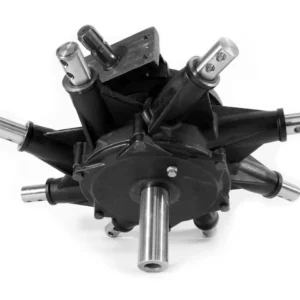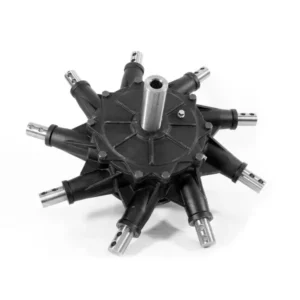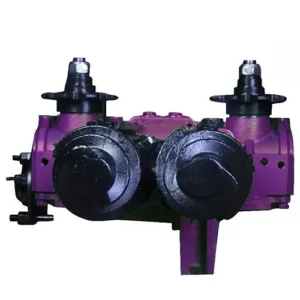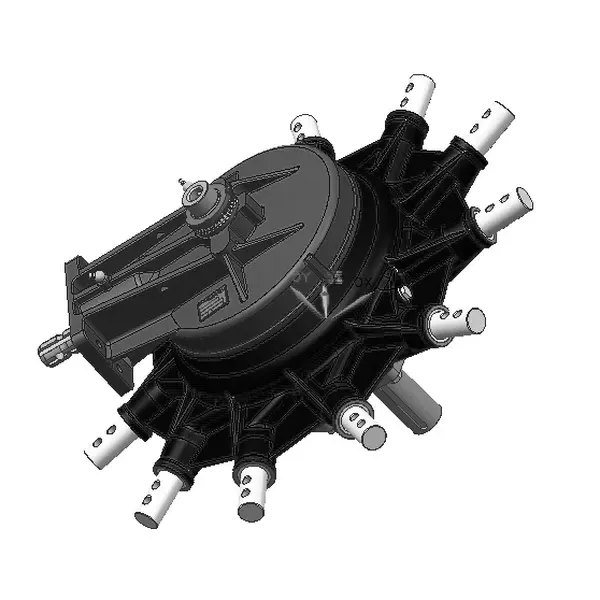 |
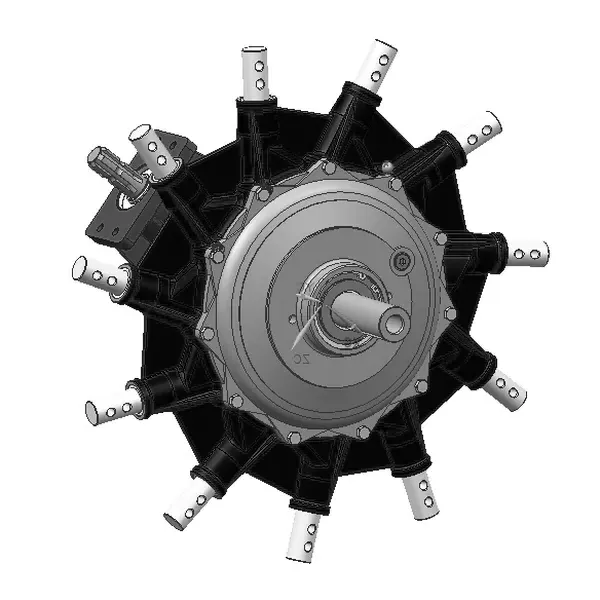 |
Specifications of Rotary Rake Gearbox K-792A (8.2:1)
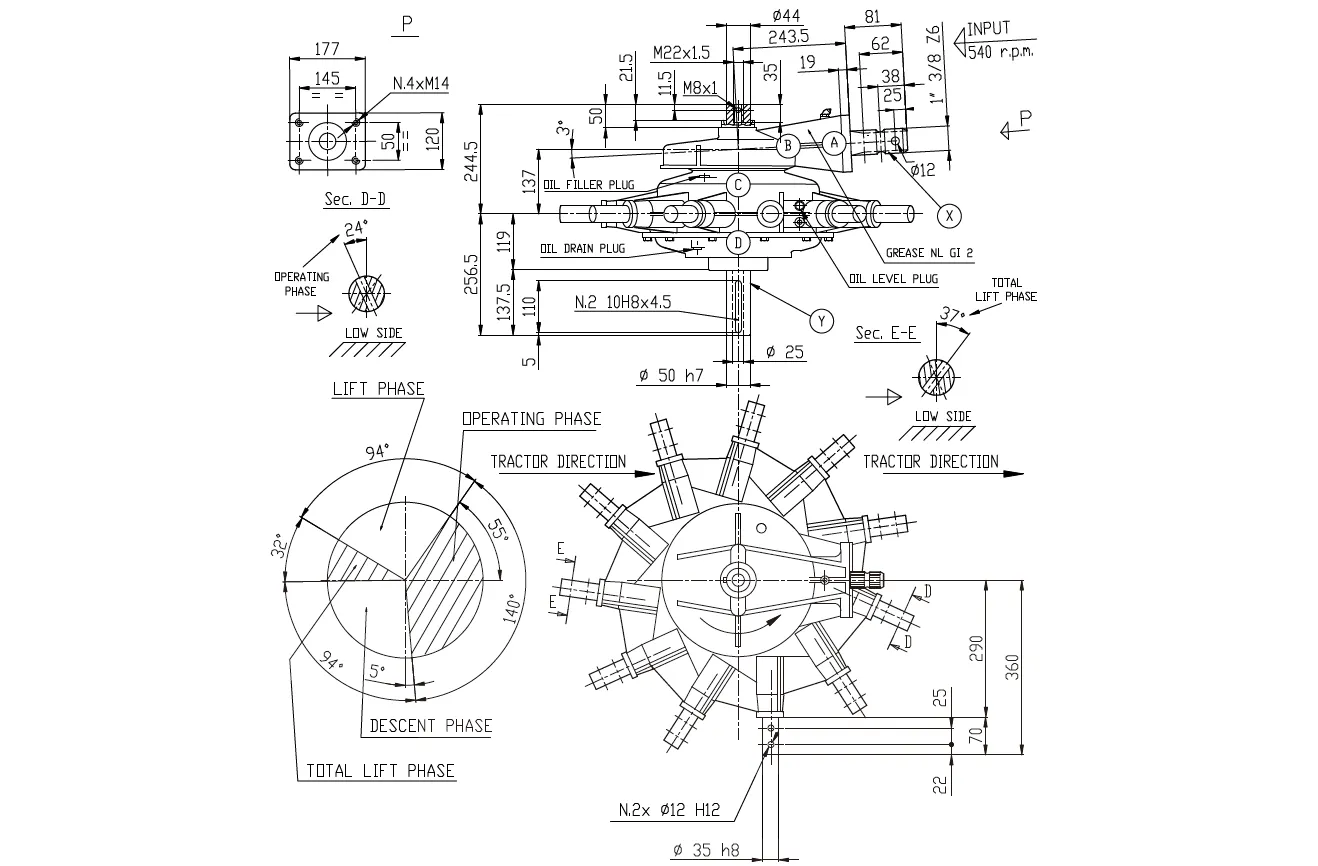

| Product Description |
Rotary Rake Gearbox – Replacement of Comer Gearbox K-792A 8.2:1
|
|---|---|
| Product details |
|
| Model |
K-792A
|
| Max. output torque |
210 nm
|
| Suitable for machine/vehicle brand |
|
| Rotation direction |
n/a
|
| Contains oil |
No
|
| Oil SAE viscosity grade |
90EP
|
| Housing material |
Cast iron
|
| Housing color |
Brown
|
| Number of arms |
11
|
| Gear ratio |
8,2:1
|
| Input shaft |
1 3/8 Z6
|
| Shaft type |
1 x 1.3/8 (Z6)
|
Characteristic of Rotary Rake Gearbox K-792A (8.2:1)
The Rotary Rake Gearbox K-792A (8.2:1) is specifically designed to meet the high demands of agricultural machinery, particularly for rotary rakes. Here are the key characteristics of this gearbox:
- High Reduction Ratio (8.2:1): The 8.2:1 ratio provides significant torque multiplication, enabling the rotary rake to operate effectively under heavy loads while maintaining optimal speed. This ratio ensures smooth and efficient operation, even when handling dense crops or challenging terrain.
- Durable Construction: Designed with robust materials, the K-792A gearbox is built to withstand the harsh conditions of agricultural operations. Its durable housing and internal components ensure long-lasting performance, even under continuous use.
- Precision Engineering: The K-792A gearbox is engineered for precision and reliability. It features tight tolerances and high-quality components, which minimize wear and tear, ensuring extended service life.
- Efficient Power Transfer: With its optimized design, the gearbox ensures efficient power transfer from the tractor’s PTO to the rotary rake, maximizing the rake’s performance while minimizing energy loss.
- Compact Design: Despite its high power capabilities, the K-792A gearbox features a compact design that is easy to install and integrate with rotary rake systems. Its size allows for better maneuverability and easier maintenance.
These characteristics combine to make the Rotary Rake Gearbox K-792A (8.2:1) an excellent choice for those seeking high performance, durability, and efficiency in rotary rake applications.
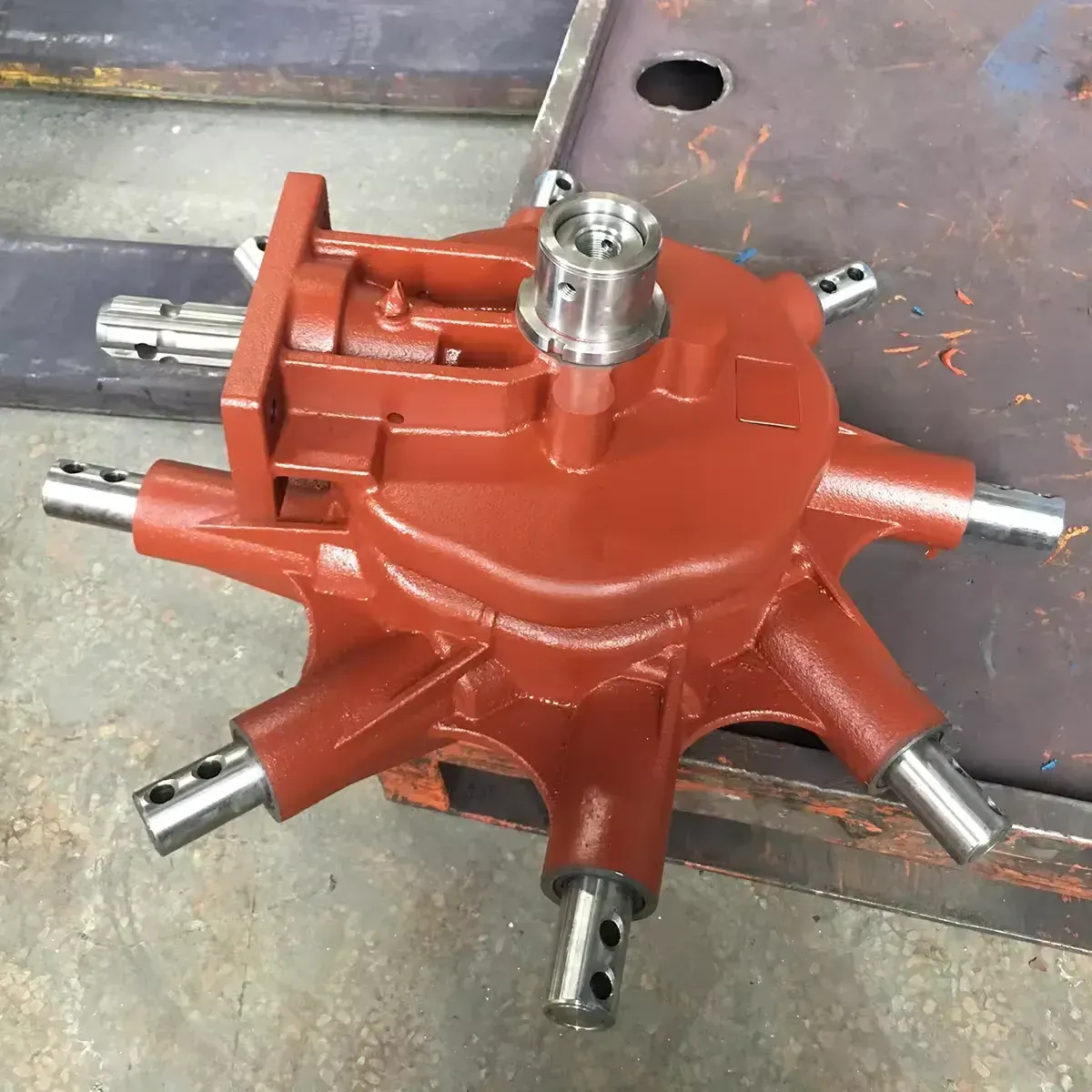
Rotary Rake Gearbox Usage Scenarios
The Rotary Rake Gearbox is primarily used in agricultural machinery, particularly for rotary rakes, which are crucial for hay and grass management. Below are the typical usage scenarios where the rotary rake gearbox is commonly applied:
1. Hay and Grass Raking
- Primary Use: Rotary rakes, equipped with gearboxes, are used to collect and turn hay or grass in fields to dry evenly before being baled. The gearbox helps transfer power from the tractor’s PTO to the rake, allowing it to move efficiently and uniformly across the field, gathering and aerating the crop for optimal drying.
- Scenario: After mowing grass, hay, or forage crops, a rotary rake is used to turn and arrange the crop for even drying. This is particularly useful for haymaking operations on large farms or agricultural sites.
2. Fodder Collection in Livestock Farms
- Application: Farms with livestock, such as dairy and cattle farms, use rotary rakes to prepare fodder or grass for feeding. The gearbox ensures the rotary rake collects grass into neat rows or windrows for easier gathering by balers or feed transporters.
- Scenario: On livestock farms, after grass is cut for feeding, rotary rakes are used to rake the grass into windrows, which are later collected by hay balers or harvested for silage.
3. Grassland Management and Maintenance
- Application: On grasslands or meadows, rotary rake gearboxes are used to manage and maintain the crop by uniformly turning and collecting grass. This helps with weed control and promotes healthier pasture regrowth by allowing sunlight to reach the ground.
- Scenario: Grassland managers or farmers use rotary rakes to maintain uniform growth patterns, control unwanted weeds, and improve the soil’s fertility. Gearboxes allow the rakes to efficiently cover larger areas.
4. Ensiling and Silage Preparation
- Application: Silage is made from green foliage, and rotary rakes help gather and prepare it for storage. The gearbox ensures that the rake works at the correct speed and torque to make the process efficient and ensure the crops are ready for ensiling.
- Scenario: On farms producing silage for livestock feed, a rotary rake with an efficient gearbox is used to windrow the grass for ensiling. The gearbox ensures optimal power transmission to handle thick or dense crops like maize or grass silage.
5. Tillage and Field Preparation for Future Crops
- Application: After harvesting the main crop, rotary rake gearboxes are often used in tillage applications to turn over crop residues or prepare the field for the next planting season. This ensures that the land is adequately aerated and ready for the next crop cycle.
- Scenario: Farmers use rotary rakes in conjunction with tillage equipment to manage stubble and other residues from the previous crop. The gearbox helps the rake operate at a consistent speed, ensuring that the field is properly prepared.
These usage scenarios highlight the versatility of rotary rake gearboxes in various agricultural settings, ensuring efficient performance across a wide range of crop management and land preparation tasks. The gearbox ensures the rake operates at optimal performance, whether used in haymaking, silage preparation, or soil aeration, making it an indispensable component in modern farming equipment.
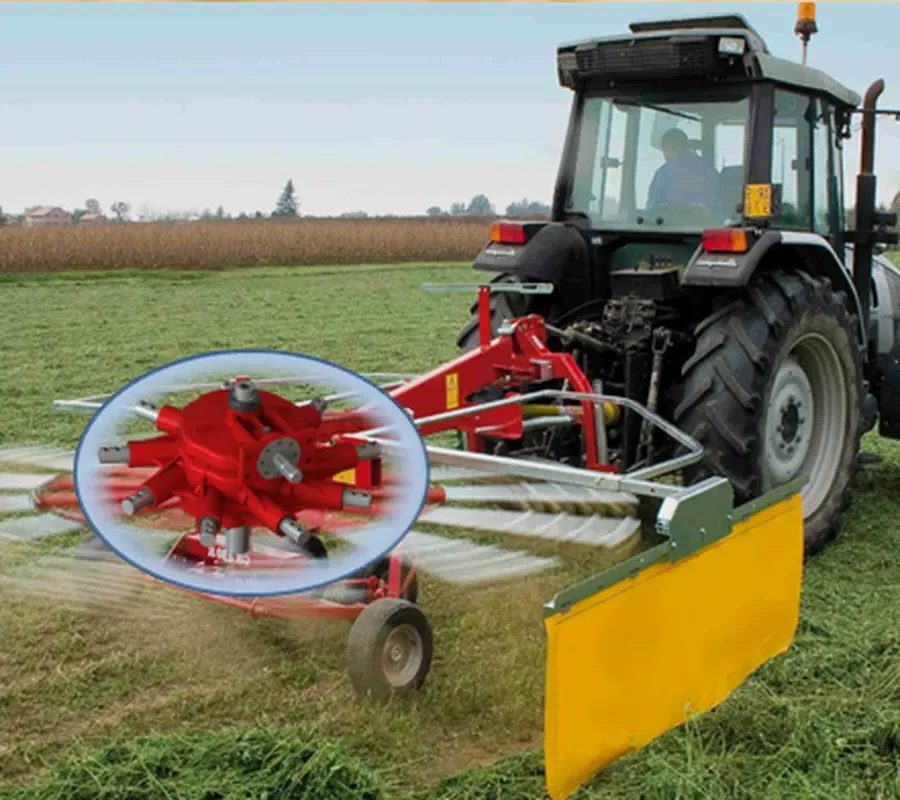 |
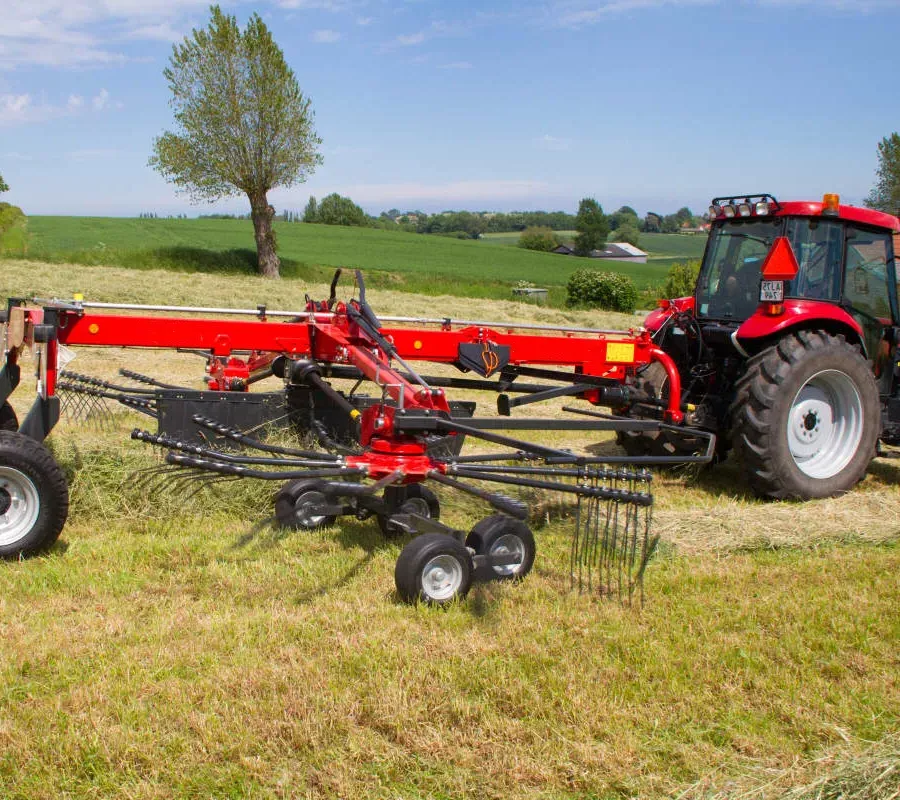 |
How to Maintain the Rotary Rake Gearbox?
Maintaining a Rotary Rake Gearbox is crucial for ensuring its efficient operation, preventing breakdowns, and extending its lifespan. Proper maintenance not only ensures the gearbox performs at optimal levels but also contributes to the longevity and reliability of the entire raking system. Here are some essential steps for maintaining a Rotary Rake Gearbox:
1. Regular Lubrication
- Importance: Proper lubrication is essential for reducing friction and preventing wear between moving parts inside the gearbox. Insufficient lubrication can cause overheating and premature failure of internal components.
- Action:
- Check oil levels regularly as per the manufacturer’s recommendations.
- Change the oil after the first 50-100 hours of use and then follow a routine change schedule based on operational hours (usually every 500-1000 hours).
- Use the recommended type of lubricant or gearbox oil specified by the manufacturer to ensure compatibility and optimal performance.
- Inspect oil for contamination and change it if it appears dirty or thickened, which indicates wear or contamination.
2. Inspect for Leaks
- Importance: Leaks in the gearbox can lead to loss of lubrication, which can cause severe damage to internal components.
- Action:
- Regularly check for oil leaks around seals, gaskets, and bolts.
- Tighten any loose bolts or fittings that could lead to leaks.
- Replace damaged seals and gaskets promptly to prevent further leakage and contamination.
3. Monitor Temperature
- Importance: Overheating can cause significant damage to the gearbox components. It may indicate insufficient lubrication, high load, or poor ventilation.
- Action:
- Monitor operating temperatures to ensure they remain within the recommended range.
- If the gearbox becomes unusually hot, stop operation immediately and investigate the cause, such as low oil levels or overloading.
- Ensure proper ventilation around the gearbox to allow heat dissipation.
4. Check for Wear and Tear
- Importance: Regular inspection for wear can prevent catastrophic failures by identifying problems early.
- Action:
- Inspect gears, shafts, and bearings for signs of wear, cracking, or excessive play. Look for irregular wear patterns or damaged teeth that may indicate misalignment or overloading.
- Examine input and output shafts for signs of damage, and check the condition of the seals around them.
- Check couplings for wear and replace any worn-out parts to prevent breakdowns.
5. Ensure Proper Alignment
- Importance: Misalignment can lead to excessive strain on the gearbox components, causing premature wear or even failure.
- Action:
- Check alignment between the PTO shaft and the gearbox. Misalignment can cause excessive vibration, wear on bearings, and increase the risk of component failure.
- Use a laser alignment tool or a straight edge to ensure that the gearbox is aligned properly with the PTO shaft.
By following these maintenance practices, you can ensure that the Rotary Rake Gearbox continues to perform efficiently, reducing the risk of breakdowns and extending the lifespan of both the gearbox and the entire raking system. Regular maintenance is crucial to achieving consistent and reliable performance, particularly during the critical haymaking or grass management seasons.
 |
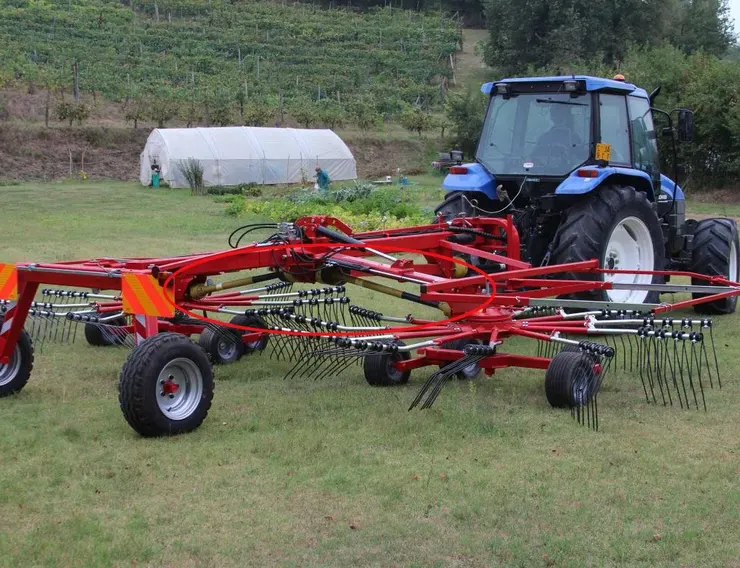 |

About FMP
Headquartered in Italy, FMP stands as a leading manufacturer with a reputation for designing, developing, and producing high-performance gearboxes, primarily serving the agricultural machinery sector. Renowned for our precision engineering, innovative solutions, and steadfast reliability, FMP has earned the trust of both agricultural and industrial markets. Our comprehensive portfolio includes custom-engineered gearboxes for lawn mowers, PTO shafts, and a wide range of essential components, each crafted with meticulous care to meet the unique demands of diverse applications.
At FMP, we understand that every client faces distinct challenges. That’s why we specialize in delivering tailored solutions, whether for individual components or fully integrated systems. By working closely with our clients, we ensure that each solution not only meets their specific needs but also enhances performance and maximizes value. Our commitment to swift, professional responses and expert guidance ensures that every inquiry is handled with precision, driving the best possible outcomes.
Clear and continuous communication is at the heart of our approach throughout the entire product development cycle. Our dedicated team collaborates directly with clients to fully understand their requirements, providing valuable insights and recommendations that ensure the most effective solutions. Whether we are designing cutting-edge products or fulfilling routine orders, FMP is committed to delivering high-quality, precision-engineered solutions, always on time. Our mission is to consistently exceed client expectations, offering exceptional service and results with every project.
At FMP, quality is the cornerstone of everything we do. We adhere to the highest manufacturing standards and implement rigorous quality control measures to ensure that each product not only meets but often exceeds industry benchmarks. This commitment to excellence, combined with our core values of integrity, teamwork, and perseverance, has helped us build long-lasting, trust-based relationships with clients across nearly 30 countries worldwide.
We are eager to cultivate global partnerships by offering expert advice and customized solutions that address the evolving needs of our clients. FMP is dedicated to fostering long-term, mutually beneficial relationships that contribute to the success of every project. Whether you need innovative solutions for a new initiative or ongoing support for an existing system, FMP is here to assist in overcoming technical challenges and ensuring your continued success.
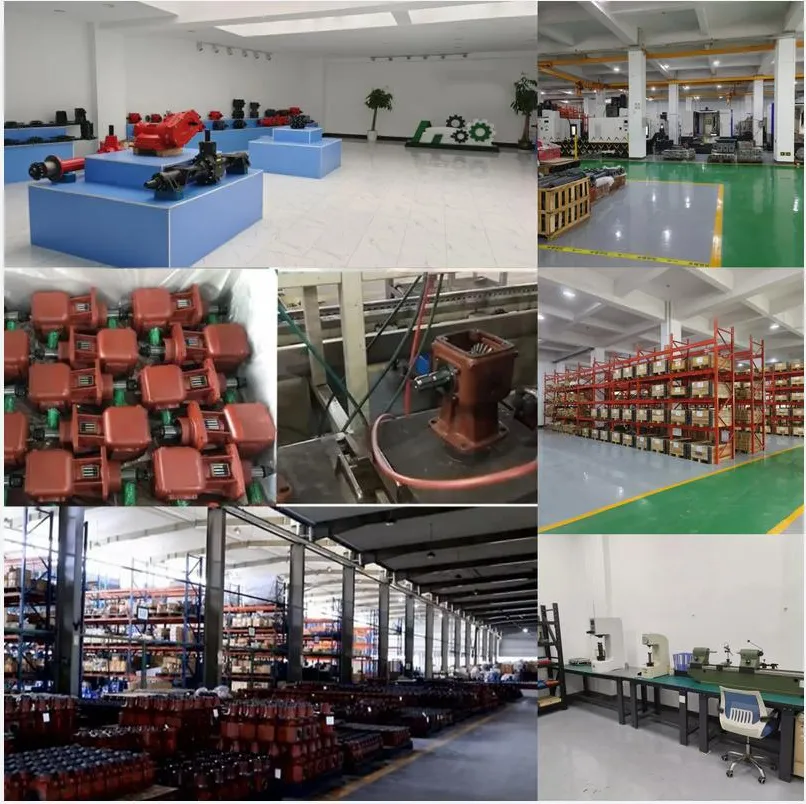
Author: CX

